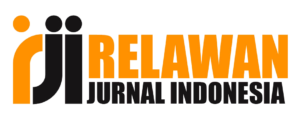Design Of Teaching Materials With A Scientific Approach On Algebraic Forms Of Middle School Vii Class Materials
DOI:
https://doi.org/10.22460/jiml.v4i3.p151-160Keywords:
Algebraic Forms, Teaching Materials, Scientific ApproachAbstract
References
Adha, I., & Refianti, R. (2019). Development of Student Worksheets (SW) Using Indonesian Realistic Mathematics Approach Based on South Sumatra Context. Journal of Mathematics Education (Judika Education), 2(1), 1–10. https://doi.org/10.31539/judika.v2i1.729
Alsaga, Sy. Lukman Hakim Alsagaf1, Boisandi2, Ira Nofita Sari3, Matsun4, E. (2018). Training on the Use of Science Practicum Tools and Materials for Science Teachers in Kubu Raya Regency Sy. 2(2), 135–144.
Ardina, F. R., & Sa'dijah, C. (2016). Analysis of Student Worksheets in Improving Students' Writing Mathematical Communication. Journal of Education: Theory, Research, And Development, 1 number 2(2015), 171–180.
Astriani, N., & Bayu Al Dhana, M. (2020). Development of Mathematics Teaching Materials Through Think-Pair-Share (Tps) Learning. 1, 87–93. http://dx.doi.org/10.1016/j.encep.2012.03.001
Bhoke, W., Tali Wangge, M. C., & Soge, M. R. (2021). Development of Student Worksheets (SW) Based on the Cooperative Learning Model Type Student Teams Achievement Divisions (STAD) in Class VIII Statistics Material. Scholar's Journal: Journal of Mathematics Education, 5(1), 202–211. https://doi.org/10.31004/cendekia.v5i1.460
Damayanti, D. S., Ngazizah, N., & Setyadi K, E. (2013). Development of Student Worksheets (SW) With Guided Inquiry Approach To Optimizing Students' Critical Thinking Ability in Dynamic Electrical Materials at SMA Negeri 3 Purworejo Class X 2012/2013 Academic Year. Radiation, 3(1), 58–62.
Hasibuan, I. (2015). Student Learning Outcomes on Algebraic Forms in Class VII SMP Negeri 1 Banda Aceh in the 2013/2014 academic year. 4, 5–11.
Kartika, Y. (2018). Analysis of the ability to understand mathematical concepts of seventh grade junior high school students on algebraic forms of material. Tambusai Journal of Education, 2(4), 777–785.
Laelasari, L., Rohaeti, E. E., & Fitriani, N. (2018). Improving Mathematical Communication Skills and Learning Skills of Middle School Students Using Contextual Teaching and Learning Approaches. JPMI (Journal of Innovative Mathematics Learning), 1(5), 847. https://doi.org/10.22460/jpmi.v1i5.p847-856
Mahmudi, A. (2015). Scientific Approach in Mathematics Learning. National Seminar on Mathematics and Mathematics Education, Uny, 1,561–566. http://seminar.uny.ac.id/semnasmatematika/sites/seminar.uny.ac.id.semnasmatematika/files/banner/PM-81.pdf
Marlina, L., Juliangkary, E., & Banjar, S. D. N. (2017). The Use of Problem Based Graph Theory Module to Improve Concept Understanding and Learning Outcomes of Mathematics Education Students at IKIP Mataram Mathematics Education Study Program, Faculty of Mathematics and Natural Sciences Ikip Mataram Introduction Graph theory course is wrong. 5(2).
Muryaningsih, S., & Mustadi, A. (2015). Prima Edukasia Journal. 3(July), 190–201. https://doi.org/10.21831/jpe.v3i2.6146
Sabiq, A. F. (2018). Scientific Approach in Islamic Religious Education Learning | i.
Suhartini, S., Suharto, S., & Yuliyanti, S. (2016). Application of the Snowball Throwing Learning Method on Algebraic Materials to Improve Student Learning Outcomes. 5(2), 99–106.
Suherman, R. (2019). PROBLEM Analysis of Students' Critical Thinking Ability in Solving Mathematical Problems Through an Open Ended
Approach. 19(1). https://doi.org/10.30998/jkpm.v3i2.2768
Sundari, I. M., Program, Nugraha, J., & Program. (2021). Development of Student Activity Sheets (DSAS) Based on Scientific Approach in Public Relations and Protocol Subjects XI OTKP 2 SMKN 1 Jombang. Journal of Office Administration Education (JPAP), 9(2), 312–320.
Syaodih, N. (2008). Research Methods Research and Development. Jakarta: Kencana., 184.
Wardani, I. F., Hobri, H., & Oktavianingtyas, E. (2017). Development of Student Worksheets (SW) Mathematics Oriented Scientific Approach To Develop Higer Order Thinking Ability (HOT) Trigonometry Subjects in High School Students Class X. Kadikma, 8(2), 1–12.
Wijaya, T. T., Purnama, A., & Tanuwijaya, H. (2020). Development of Learning Media Based on the Tpack Concept on Lines and Angles Using Hawgent Dynamic Mathematics Software. JPMI – Journal of Innovative Mathematics Learning, 3(3), 205–214. https://doi.org/10.22460/jpmi.v1i3.205-214














